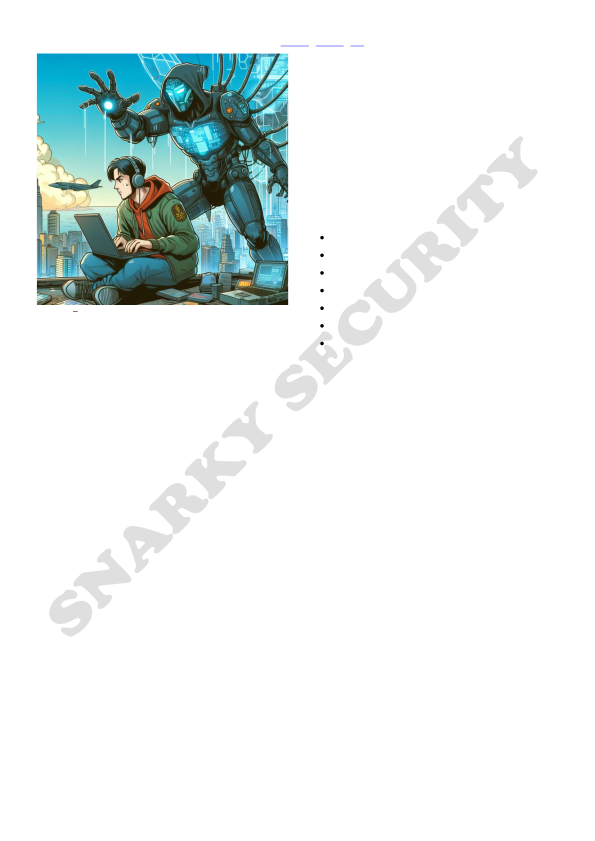Architecture of Consoles: A Practical Analysis

Rodrigo Copetti’s series of books, «Architecture of Consoles: A Practical Analysis, » dives deep into the fascinating world of video game consoles, uncovering the secrets behind their mind-boggling technology. But let’s be honest, who needs a social life when you can spend your time dissecting the inner workings of these magical boxes, right?
In this series, the author takes us on a wild ride through the evolution of consoles, proving that they’re more than just a bunch of numbers and fancy jargon. From the Nintendo 3DS to the Xbox and PlayStation series, these books show that consoles are like snowflakes — each one is unique and special in its own way.
So, if you’re ready to trade your social life for a deep dive into the mesmerizing world of console architecture, Copetti’s books are just the ticket. They’re a treasure trove of technical knowledge, perfect for anyone who’s ever wondered what makes these magical boxes tick.
These books are part of a series on console architecture, and it is structured similarly to his previous work on the PS3's architecture. This allows readers who are familiar with the PS3's architecture to compare the two consoles side-by-side. Books on console architecture, including «PlayStation 3 Architecture, » are targeted towards individuals with a basic knowledge of computing who are interested in the evolution and internal workings of video game consoles. His writings are not developer manuals but rather in-depth introductions to how each system works internally. He tries to adapt his content for wider audiences, so even those without a deep understanding of computing can still find value in his work. His books are appreciated by both technical and non-technical readers for their in-depth yet accessible explanations of complex console architectures. Therefore, his target audience can be considered quite broad, encompassing anyone from casual readers with an interest in technology to professionals in the gaming industry, computer engineers, and enthusiasts of console gaming and hardware.
Some other books by this author
📌«NES Architecture: More than a 6502 machine»
📌«Game Boy Architecture»
📌«Super Nintendo Architecture»
📌«PlayStation Architecture»
📌«Nintendo 64 Architecture»
📌«GameCube Architecture»
📌«Wii Architecture»
📌«Nintendo DS Architecture»
📌«Master System Architecture»
Xbox Original
If you are not familiar with Xbox original, it’s suggested to start with reading Xbox Arch before Xbox 360. «Xbox Architecture» The book provides an in-depth look at the console’s architecture, focusing on its unique features and the technological innovations that set it apart from its competitors. The book begins by discussing the historical context of the Xbox’s development, noting that Microsoft aimed to create a system that would be appreciated by developers and welcomed by users due to its familiarities and online services.
📌One of the main topics covered in the book is the Xbox’s CPU. The console uses a slightly customized version of the Intel Pentium III, a popular off-the-shelf CPU for computers at the time, running at 733 MHz. The book explores the implications of this choice and how it contributes to the overall architecture of the Xbox.
📌The book also delves into the Graphics of the Xbox. It uses a custom implementation of Direct3D 8.0, which was extended to include Xbox-specific features. This allowed PC developers to port their games to the Xbox with minimal changes
📌The Development Ecosystem of the Xbox is another key topic covered in the book. Game development on the Xbox is complex, with various libraries and frameworks interacting with the console’s hardware. The book provides a detailed analysis of this ecosystem, helping readers understand the intricacies of game development on the Xbox
📌The Network Service of the Xbox is also discussed. The Xbox included an Ethernet connection and a centralized online infrastructure called Xbox Live, which were innovative features at the time. The book explores how these features contribute to the overall architecture of the Xbox
📌Finally, the book also covers the Security aspects of the Xbox, including its anti-piracy system. It explains how this system works and how it fits into the console’s overall architecture
Xbox Original Architecture quick facts
📌The original Xbox used a familiar system for developers and online services for users
📌The Xbox CPU is based on Intel’s Pentium III with the P6 microarchitecture
📌The console has 64 MiB of DDR SDRAM, which is shared across all components
📌The Xbox GPU is manufactured by Nvidia and is called the NV2A
📌The original Xbox controller, called The Duke, was replaced with a new revision called Controller S due to criticism
Xbox 360
The book «Xbox 360 Architecture: A Supercomputer for the Rest of Us» provides an in-depth analysis of the Xbox 360's architecture, discussing its design, capabilities, and the technological innovations it introduced and, explaining how the console works internally. It is a valuable resource for anyone interested in the evolution of gaming console technology. The book is part of the «Architecture of Consoles: A Practical Analysis» series, which looks at the evolution of video game consoles and their unique ways of working.
The book begins with a brief history of the Xbox 360, which was released a year before its main competitor, the PlayStation 3. It discusses the business aspect of the Xbox 360's CPU and the sequence of events that led to its development.
The book then delves into the technical aspects of the Xbox 360's architecture. It discusses the console’s CPU, which was a significant departure from the single-core CPU used in the original Xbox. The Xbox 360's CPU, known as Xenon, was a triple-core processor designed by IBM. Each core was capable of handling two threads simultaneously, allowing up to six threads to be processed at once.
The book also discusses the Xbox 360's GPU, known as Xenos, which was designed and manufactured by ATI. The GPU was based on a new architecture and could deliver 240 GFLOPS of performance. The Xenos GPU introduced the concept of a unified shader pipeline, which combined two different dedicated pipelines for increased performance.
The book further discusses the Xbox 360's main memory, which was a significant increase over the original Xbox’s 64 MB. This allowed for more complex games and applications to be run on the console.
The book also covers the Xbox 360's operating system, development ecosystem, and network service. It discusses how the console’s architecture was designed to be flexible and easy to program for, with a balanced hardware architecture that could adapt to different game genres and developer needs.
The main topics covered in the book include:
📌CPU: The book delves into the details of the Xbox’s CPU, discussing its unique features and how it compares to the CPUs of other consoles. It also provides a historical context, explaining how the CPU’s design was influenced by the technological trends and challenges of the time
📌Graphics: The book provides a detailed analysis of the Xbox’s graphics capabilities, including its use of a semi-customised version of Direct3D 9 and how this influenced future revisions of Direct3D
📌Security: The book discusses the Xbox’s anti-piracy system, explaining how it works and how it contributes to the console’s overall architecture
📌Development Ecosystem: The book explores the complexities of game development on the Xbox, discussing the various libraries and frameworks used and how they interact with the console’s hardware
📌Network Service: The book also covers the Xbox’s online capabilities, discussing its Ethernet connection and the Xbox Live online infrastructure
Xbox 360 Architecture quick facts
📌The Xbox 360 was released a year before its main competitor, the PS3
📌The Xbox 360's CPU, called Xenon, is a multi-core processor developed by IBM
📌The console uses a semi-customized version of Direct3D 9 for its GPU, called Xenos
📌The Xbox 360 has a unified memory architecture with 512 MB of GDDR3 RAM
PS2
«PlayStation 2 Architecture» provides an in-depth analysis of the PlayStation 2 console’s internal workings. Despite not being the most powerful console of its generation, the PlayStation 2 achieved a level of popularity that was unthinkable for other companies. The book explains that the PlayStation 2's success was due to its Emotion Engine, a powerful package designed by Sony that ran at ~294.91 MHz. This chipset contained multiple components, including the main CPU and other components designed to speed up certain tasks. The book also discusses the PlayStation 2's operating system, which relied on the Image Processing Unit (IPU) for DVD playback and compressed High-resolution textures. The PlayStation 2's development ecosystem is also covered, with Sony providing the hardware and software to assist game development
PS2 Architecture quick facts
📌The PlayStation 2 (PS2) was not the most powerful console of its generation but achieved immense popularity
📌The Emotion Engine (EE) is the heart of the PS2, running at ~294.91 MHz and containing multiple components, including the main CPU
📌The main core is a MIPS R5900-compatible CPU with various enhancements
📌The PS2 uses Vector Processing Units (VPUs) to enhance its processing capabilities
📌The console has backward compatibility with the original PlayStation through the use of an I/O Processor (IOP)
📌The PS2 introduced the DualShock 2 controller, which featured two analog sticks and two vibration motors
📌The operating system of the PS2 is stored on a 4 MB ROM chip
PS3
«PlayStation 3 Architecture» offers a comprehensive analysis of the PlayStation 3 console’s internal structure. The book explains that the PlayStation 3's underlying hardware architecture continues the teachings of the Emotion Engine, focusing on vector processing to achieve power, even at the cost of complexity. The PlayStation 3's CPU, the Cell Broadband Engine, is a product of a crisis of innovation and had to keep up as trends for multimedia services evolved. The book also discusses the PlayStation 3's main memory and the Synergistic Processor Element (SPE), which are accelerators included within the PS3's Cell. The PlayStation 3 also contains a GPU chip manufactured by Nvidia, called Reality Synthesizer or 'RSX', which runs at 500 MHz and is designed to offload part of the graphics pipeline
PS3 Architecture quick facts
📌The PS3 focuses on vector processing to achieve power, even at the cost of complexity
📌The Cell Broadband Engine is the main processor of the PS3, developed jointly by Sony, IBM, and Toshiba
📌The PS3's CPU is massively complex and features a Power Processing Element (PPE) and multiple Synergistic Processor Elements (SPEs)
📌The PS3 uses a GPU chip called Reality Synthesizer (RSX) manufactured by Nvidia
There are several notable differences in architectures are discussed in the books
Xbox 360 and Xbox Original
📌CPU: The original Xbox relied on popular off-the-shelf stock (Intel’s Pentium III) with slight customizations. This was a single-core CPU extended with vectorized instructions and a sophisticated cache design. On the other hand, the Xbox 360 introduced a new type of CPU that was unlike anything seen on the store shelves. This was a multi-core processor developed by IBM, reflecting an obsessive need for innovation characteristic of the 7th generation of consoles
📌GPU: The original Xbox’s GPU was based on the NV20 architecture, with some modifications to work in a unified memory architecture (UMA) environment. The Xbox 360, however, used a semi-customized version of Direct3D 9 for its GPU, called Xenos
📌Memory: The original Xbox included a total of 64 MiB of DDR SDRAM, which was shared across all components of the system. The Xbox 360, on the other hand, had a unified memory architecture with 512 MB of GDDR3 RAM
📌Development Ecosystem: The original Xbox was designed with familiarities appreciated by developers and online services welcomed by users. The Xbox 360, however, was designed with an emphasis on the emerging 'multi-core' processor and unorthodox symbiosis between components, which enabled engineers to tackle unsolvable challenges with cost-effective solutions
📌Release Timing: The Xbox 360 was released a year before its main competitor, the PlayStation 3, and was already claiming technological superiority against the yet-to-be-seen PlayStation 3
PS2 and PS3:
📌CPU: The PS2's Emotion Engine was designed by Toshiba, using MIPS technology, and focused on achieving acceptable 3D performance at a reduced cost. In contrast, the PS3's CPU, the Cell Broadband Engine, was developed through a collaboration between Sony, IBM, and Toshiba, and is a highly complex and innovative processor that intersects complex needs and unusual solutions
📌GPU: The PS2's GPU, the Graphics Synthesizer, was a fixed-functionality GPU designed for 3D performance. The PS3's GPU, the Reality Synthesizer (RSX), was manufactured by Nvidia and was designed to offload part of the graphics pipeline, offering better parallel processing capabilities
📌Memory: The PS2 had 32 MB of RDRAM, while the PS3 had a more advanced memory system, with 256 MB of XDR DRAM for the CPU and 256 MB of GDDR3 RAM for the GPU.
📌Development Ecosystem: The PS2's development ecosystem was based on MIPS technology and focused on achieving acceptable 3D performance at a reduced cost. The PS3's development ecosystem was more complex, involving collaboration between Sony, IBM, and Toshiba, and focused on creating a powerful and innovative system
📌Backward Compatibility: The PS2 was backward compatible with PS1 games through the inclusion of the original PS1 CPU and additional hardware components. The PS3 also offered backward compatibility with PS2 games, but this was achieved through software emulation in later revisions of the console
PS2 and Xbox Original:
📌CPU: The PS2's Emotion Engine was designed by Toshiba, using MIPS technology, and focused on achieving acceptable 3D performance at a reduced cost. In contrast, the Xbox Original’s CPU was based on Intel’s Pentium III, which was a popular off-the-shelf stock with slight customizations
📌GPU: The PS2's GPU, the Graphics Synthesizer, was a fixed-functionality GPU designed for 3D performance. The Xbox Original’s GPU was based on the NV20 architecture, with some modifications to work in a unified memory architecture (UMA) environment
📌Memory: The PS2 had 32 MB of RDRAM, while the Xbox Original included a total of 64 MiB of DDR SDRAM, which was shared across all components of the system
📌Development Ecosystem: The PS2's development ecosystem was based on MIPS technology and focused on achieving acceptable 3D performance at a reduced cost. The Xbox Original was designed with familiarities appreciated by developers and online services welcomed by users
PS3 and Xbox 360:
📌CPU: The PS3's CPU, the Cell Broadband Engine, is a highly complex and innovative processor that intersects complex needs and unusual solutions. It was developed through a collaboration between Sony, IBM, and Toshiba. On the other hand, the Xbox 360's CPU, Xenon, was a new type of CPU that was unlike anything seen on the store shelves. It reflects an obsessive need for innovation, a peculiar trait of that era
📌GPU: The PS3's GPU, the Reality Synthesizer or ‘RSX’, was manufactured by Nvidia and was designed to offload part of the graphics pipeline. The Xbox 360's GPU, Xenos, was a semi-customised version of Direct3D 9 that makes room for the extra functions of Xenos
📌Memory: The PS3's memory was distributed across different memory chips, and while it didn’t implement a UMA architecture, it could still distribute graphics data across different memory chips if programmers decide to do so.
📌Development Ecosystem: The PS3's development ecosystem was based on the Cell Broadband Engine, a joint project between Sony, IBM, Toshiba, and Nvidia. The Xbox 360's development ecosystem was based on the Xenon CPU and the semi-customized version of Direct3D 9































